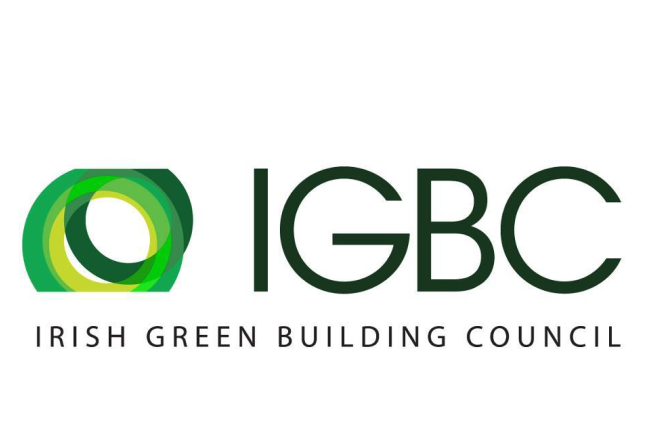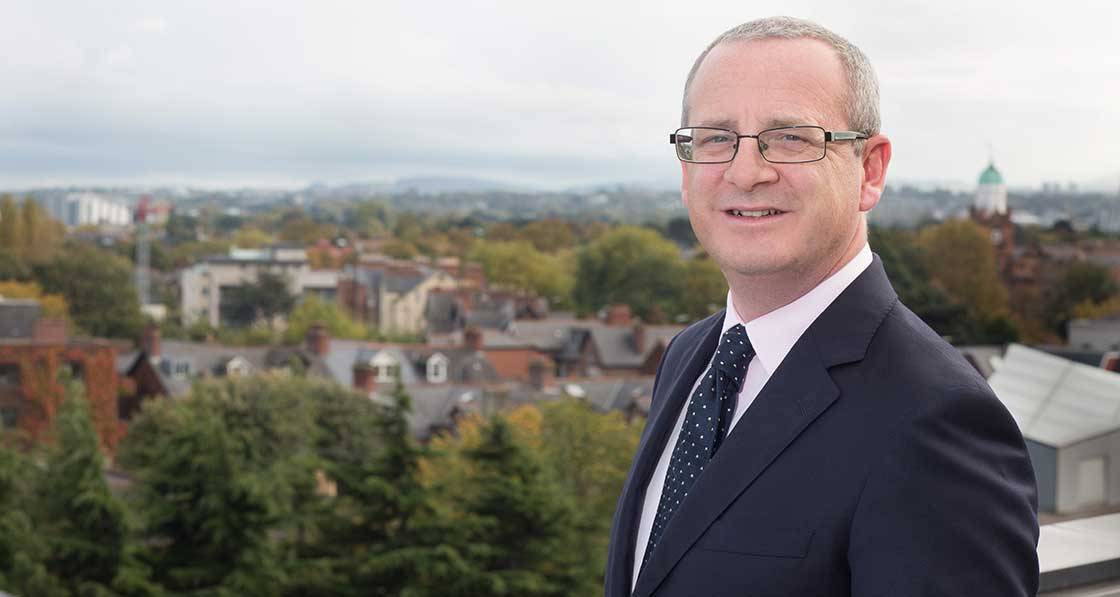
- Feature
- Posted
Banking on sustainability
Last year Irish banking behemoth AIB launched discounted development finance for homes certified to the Irish Green Building Council’s rating system, the Home Performance Index. But what was behind the move, how is it being received and does this indicate the finance industry is getting serious about green homes?
Additional words by Jeff Colley
These days sustainability is a core part of business for banks like AIB, particularly when you hear numbers like €600 million. That’s the amount of green finance that the pillar bank has already lent over the last 12 months to developers here in return for submitting their schemes to an international green building standard known as HPI (Home Performance Index) which is spreading like wildfire – with over 20,000 homes built or in development to the standard to date.
The motivation for developers is twofold. Firstly, AIB is offering discounted finance to developers in return for certifying schemes to the HPI. Secondly, the bigger developers know that the writing is on the wall: the investment community is increasingly moving towards demanding verifiable sustainability claims on real estate projects as ESG (environmental, social and governance) reporting requirements become the norm in the investment community.
Given that AIB’s offer is tied to the HPI, it’s worth understanding just how rigorous this flourishing new national certification scheme for new homes is.
Developed and managed in Ireland by the Irish Green Building Council (IGBC), the HPI is the residential equivalent of wellknown green building certification systems for non-domestic property like LEED or BREEAM, and takes a holistic approach to evaluating the sustainability of new housing with 35 measures including calculated energy efficiency, embodied carbon, monitored indoor environmental quality, biodiversity, land use, water use, universal design and accessibility to public transport, schools and amenities. “I think the reason the uptake is very successful in AIB is because they lend to developers with large developments which may include investors from pension funds,” said IGBC programme manager Johanna Varghese.
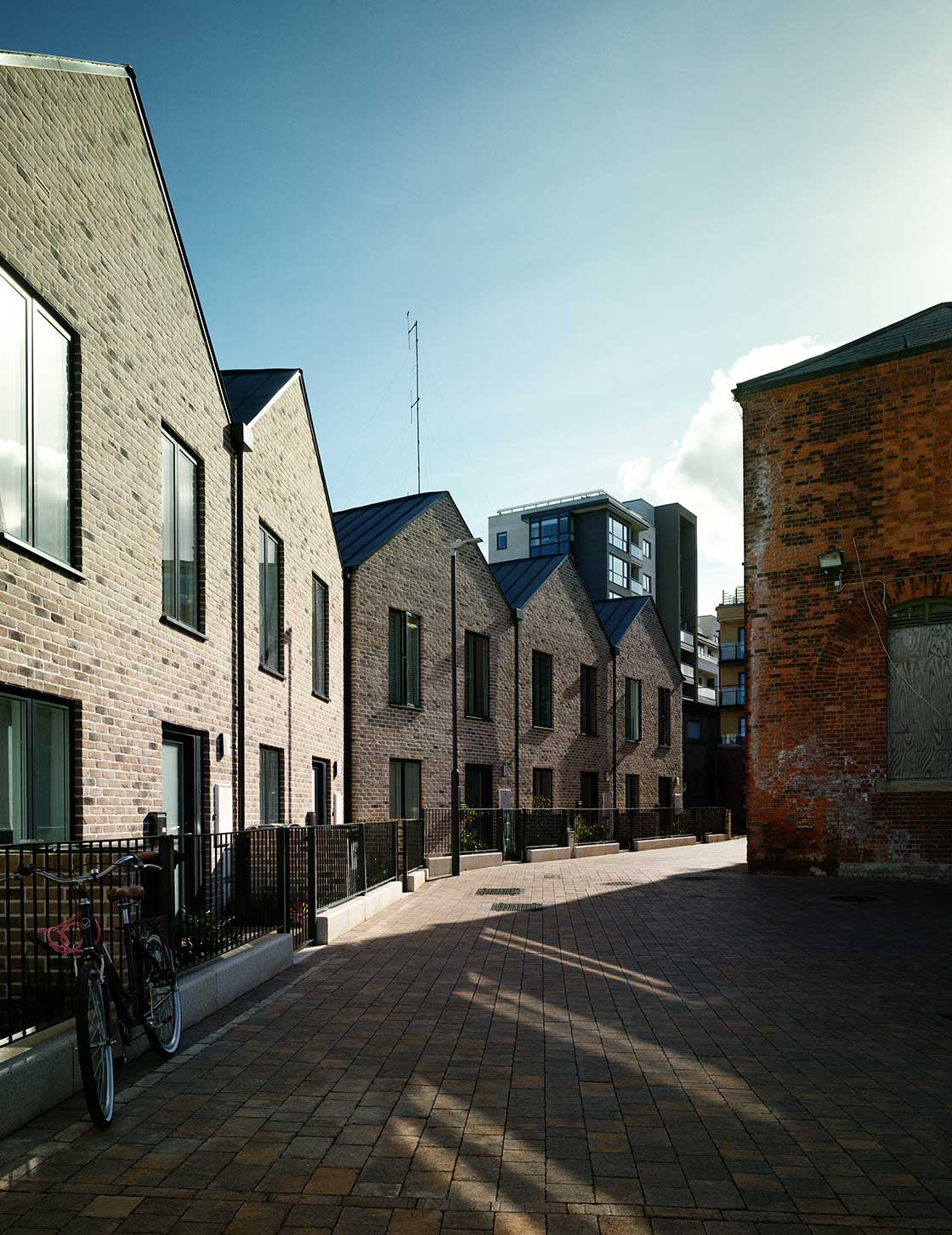
George's Place by DLRCOCO, photo by Marie-Louise Halpenny
This article was originally published in issue 45 of Passive House Plus magazine. Want immediate access to all back issues and exclusive extra content? Click here to subscribe for as little as €15, or click here to receive the next issue free of charge
“Often, long term investors are looking for certified properties as it provides a certain amount of assurance that the buildings are built well, are durable, energy efficient and sustainable with many ESG requirements fulfilled. In addition, the value often appreciates over time.”
So how did the bank come across the HPI standard and why did it appeal? AIB has been prioritising its sustainability agenda for some time. Under the leadership of chief executive officer Colin Hunt, it had pledged some time ago that 70 per cent of all its new lending would be “green’’ or “transition’’ by 2030, and that it would be net zero in all its own lending activities by 2040 (excluding agriculture).
With those two key targets in mind, Paul Kelly, head of sustainability at AIB’s real estate finance division, told Passive House Plus that, as a leading player in the development finance space, the bank felt it had a duty to more than just encourage developers to tick the sustainability box.
“With that leadership position comes responsibility and so we’re conscious that we have to bring customers with us … and to leave no one behind,” he said.
As a platinum member of the IGBC, all the roads were clearly leading to the adoption of HPI as its standard, not least once it emerged that several of its developer clients were also members too. “If I look at our customer base, it’s almost an overlay of the IGBC,” he said.
“What we wanted to do was come up with something that, I suppose, resonated with our own values in terms of trying to do more.” International recognition was important, said Kelly, but also that it was “independently verifiable”. In developing the HPI, the IGBC aligned it with the EU’s Level(s) sustainable buildings framework, taxonomy on sustainable finance and European Committee for Standardization (CEN) standards, along with Irish building regulations and the international Well certification for communities. The certification was awarded 5 out 5 for best practice and transparency by the European Construction Sector Observatory.
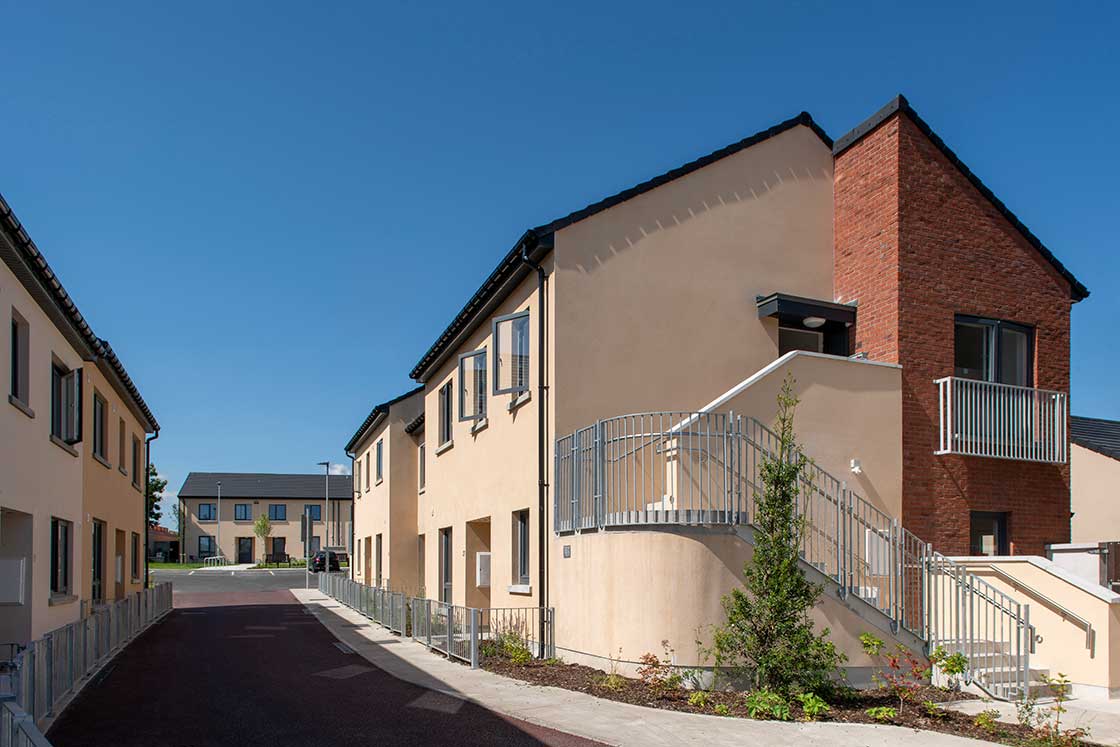
Kilbride Court social housing by Coady Architects, photo Fionn McCann
Kelly said that in addition to the HPI’s international credentials, AIB was attracted to the fact that the HPI goes far beyond energy performance calculations. “BERs are an important tool in that they align to the taxonomy and all of that,” he said. “But, equally, they have their restrictions and limitations.”
“What we liked about HPI was that it took into account the location, it took into account water usage, daylight, the overall emissions. It took in biodiversity, acoustic performance … a huge amount more than just the BERs. And so we looked at that and we said, yeah, you know, that’s a good basis. But then we engaged with the IGBC and we had some really good conversations with Pat (Barry) and his team and they understood what we were trying to do, and that we were trying to put a process in place from our perspective that could be robust.”
Kelly’s own route to spearheading the AIB’s sustainability drive in real estate finance was a circuitous but interesting one that started with a project in social housing. In the course of working with smaller developers all around the country to build a national profile, he was encouraged to help them get a foothold in ‘turnkey’ social housing. “I realised that there were disparate strands, but I then said, let’s pull together a fund here….and so we actually kind of almost created a sausage machine that would allow the bank consider these kinds of social housing deals a lot quicker, a lot more smoothly, a lot more efficiently.”
This involvement in the social housing space segued naturally into sustainability, with Kelly later joining the board of the Oakfield Trust, where he focused on kicking off funds to help social enterprises. That led to getting invited to discussions and proposals around green bonds, and later green loans and ESG and before long he gained a name as AIB real estate finance’s “green guy”.
“So it started off small in effect,” he said. “In a bank you have your day job, and then you have your after-hours stuff.” He agreed with his bosses that this was unsustainable (“no pun intended”, he jokes) so, to no-one’s surprise, sustainability became the day job. The over €600-odd million worth of loans generated by AIB’s current green development finance offering is currently having the most resonance with developers building private rental sector (PRS) developments. “The reason being that the purchasers of PRS are particularly concerned about ESG credentials said Kelly.
But how much of a cost premium is HPI adding? Remarkably little, it turns out. “We modelled it, and we found with the PRS schemes that there’s a cost of approximately €350 per unit on HPI, when you take into account the extra design features, going through the processes, the extra paperwork”. So what the bank tries to do is ensure any margin reduction will enables the HPI costs to be covered “and some”.
“We offer this to every customer that walks in the door. Every time they get a term sheet from us it will say ‘your margin is X, if you go with HPI it’s Y.’ And it’s always a reduction. It’s 0.1% which sounds small, but we modelled it and realised that we are covering the cost double.”
Given that these PRS schemes tend to be large projects, even relatively small cost savings can add up. “Let’s say the customer’s cost is €100,000 for doing HPI,” says Kelly.
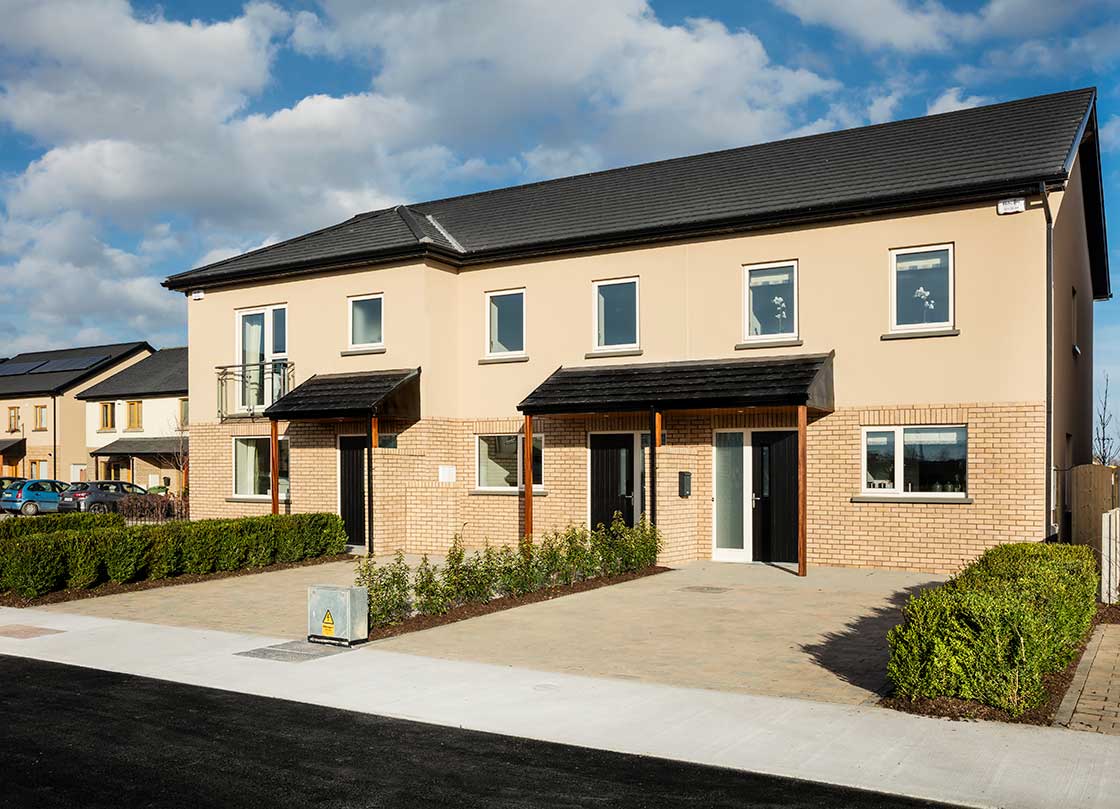
Silken Park by Durkan Residential, photo Peter Moloney
“The average margin reduction was meaning to them about €200,000. So they’re getting all the costs covered. They’re getting a better product for their purchaser, they’re helping the environment, and they’re quids in. We as a bank are taking a hit on that margin income, but we are happy to do that because we’re trying to prompt customers to move in the right direction.”
While engagement has been positive so far among AIB clients serving the PRS sector, Kelly cautioned that uptake wasn’t as strong among traditional house builders – and the bank has plans to fix that, starting by engaging with the IGBC to work out how to tackle it.
“It’s not good enough from our perspective that we see that estate houses, the HPI offering isn’t really quite landing,” he says. “Is that something to do with our offering, or is it that the HPI isn’t quite covering it? We’re literally just at the foothills of having those conversations with the IGBC. Is it whole life carbon, is it net zero? How might we try to develop a proposition for our developer customers that takes into account some of those future pieces? The principle is trying to prompt behaviours to look to the next thing.”
As it stands AIB launched a green mortgage offering with rate reductions for homes with a B3 BER or higher in 2021 – developed by the mortgage lending team before and separately from the green development finance initiative.
As AIB seeks to expand the footprint of its green development finance beyond PRS and into the traditional house builder market, Kelly says he expects to be “a bit more involved” with the mortgage lending team to understand what their end user customers’ wants are.
European market movement
There is precedent here, with many banks in Europe starting to combine discounted developer finance with offering their own preferential rate to buyers of certified green homes, according to Dr Monica Ardeleanu, project coordinator for the pan-European Smarter Finance for Families initiative. “Our bank partners do not have to implement a new process for a green development loan. The process connecting a green certified residential project to a development loan or retail home mortgage is exactly the same. The reduction in financing risk for green homes versus standard homes also applies to both types of loans.”
In 2019 the IGBC partnered with 12 green building councils, The United Nation Environment Programme’s Copenhagen Centre on Energy Efficiency, Habitat for Humanity International, and 11 other expert green organisations (along with Passive House Plus magazine) in the EU Horizon 2020-funded Smarter Finance for Families initiative to implement best-in-class green mortgage and green loan programmes, including preferential financing for renovation loans that are certified to ambitious green standards.
The initiative was also designed to support improving finance options for green homes in regions where energy affordability and fuel poverty are issues.
By the middle of 2023 over €8.5 bn worth of green home projects were built or under the process of certification within the Smarter initiative. A new phase co-funded by the EU’s Life programme called Smarter Finance for EU will create a European Centre of Excellence to ratchet up the programme’s ability to catalyse and foster the development of green finance linked to credible building certifications. Drawing from the hard-won experience and expertise that have led to successful green home certifications and related finance products, the centre will provide key capacity building for the financial services and investment industries, as well as support for ensuring the rebuilding of Ukraine assists the country in their urgent need to transition towards greener energy and fuels.
With recognition of the need to address a confluence of planetary emergencies – meaning interest in green homes has never been higher – there is an all too real risk of greenwashing, or a rush towards poorly conceived solutions. That’s why a key element of Smarter Finance for EU is to focus on the adoption of verified green home rating systems, underpinned by rigorous assessments, including quantification of a home’s sustainability under a number of indicators.
According to Kelly, the rigour required for accredited green ratings offers additional benefits. He takes some comfort in the huge amount of paperwork (albeit all online these days) and sign-offs that developers have to process and push through every month for drawdowns, adding that “everybody is signing in their own blood that everything is in line with regulations”.
“But equally, I think that underscores why we would like to see more and more people on the new build side trying to push beyond regulations and taking that on as a challenge, because I think then that the risk of non-compliance starts getting heavily mitigated if people are moving on beyond even what the [current] regulations are. So that’s the view we would take.”
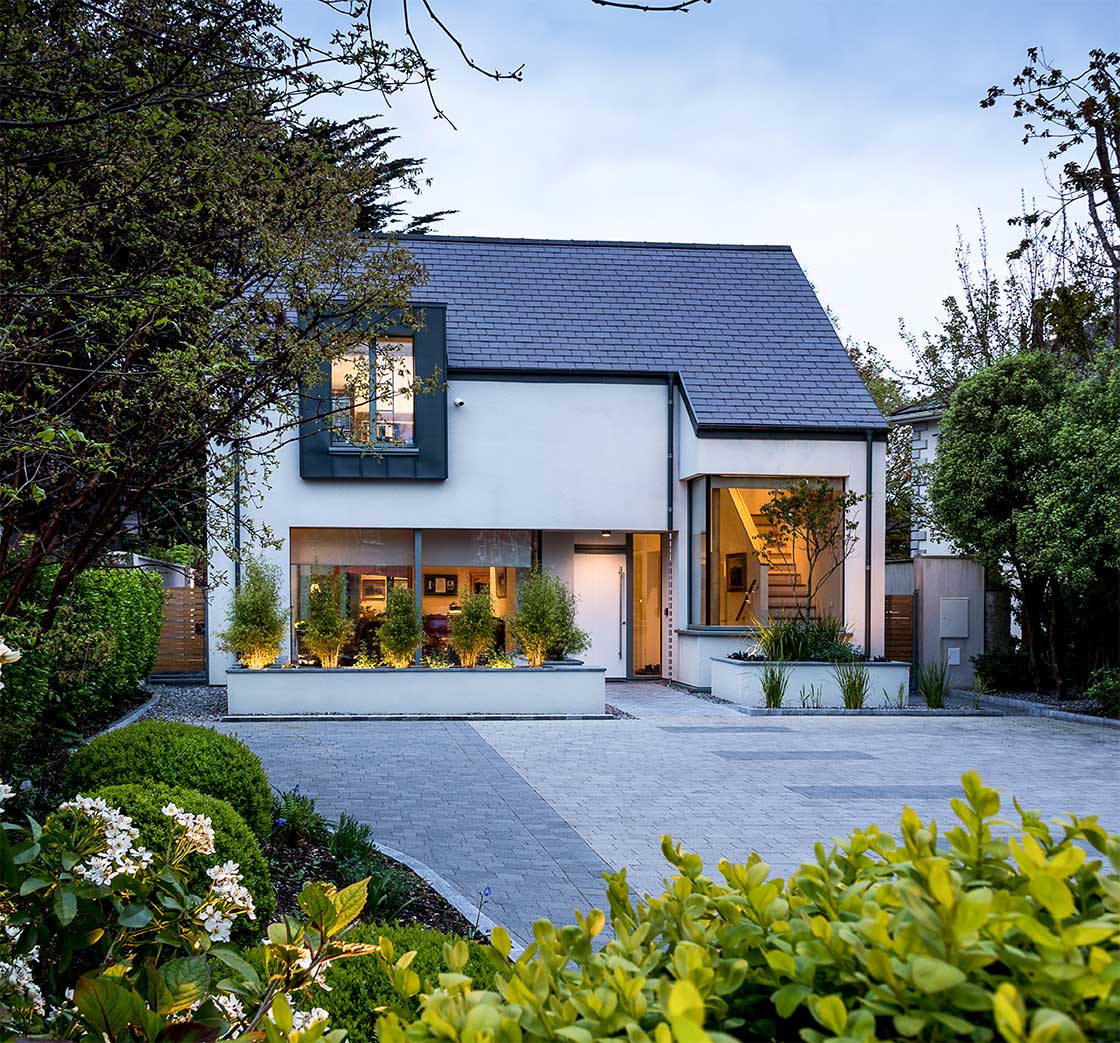
Wayside passive house by Wain Morehead Architects, photo Gabrielle Morehead
Kelly also believes the need to address the ESG agenda has had a positive influence on developers in terms of understanding their role in the supply chain of construction, including looking after customers when the building is handed over. “I think we’re all much more conscious of the interconnectivity between all of us, and that’s why, when I speak about AIB’s role, we speak about us but we speak about us in society as well.”
Kelly acknowledges that the larger PLCs and large private developers are the ones that have sustainability teams and are ahead of the ESG game because “they’re large enough to have the corporate head space to do it” and “are operating in a different ecosystem, even internationally”.
“What I find encouraging is that those large developers are … pushing that envelope or asking those questions and they’re receptive to the answers. So it’s not being foisted upon them. They are actually making mindful decisions to do this, to try to push beyond what they’re actually required to do, and it’s extraordinary to see how far they’re going.” He cites the example of real estate firm IPUT’s new four-unit, 550,000 sq ft industrial buildings in the Quantum Logistics Park at Kilshane Cross in Dublin, (near Dublin airport) perhaps the first time someone has built such massive buildings in Ireland entirely in timber frame.
He is already hearing how hard some developers go in pushing their customers on sustainability, although very much at a measured pace. He recalls a conversation with one such developer, where he asked how comfortable he would be with AIB managers talking about issues like meeting the United Nations Sustainable Development Goals in relation to eradicating child labour and modern slavery. The developer replied that they had a sustainable procurement policy in place and was already having those conversations with sub-contractors.
AIB is taking a similar approach with its other customers, says Kelly, in terms of pointing the direction things are going and “giving people the opportunity to come along”.





